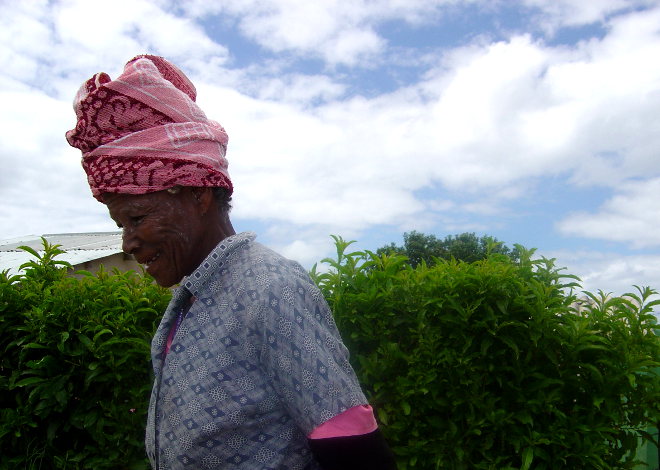 In a special guest post, author Toko Loshe guides us through the thorny issue of turning real, raw and emotional experiences into a memoir.
In a special guest post, author Toko Loshe guides us through the thorny issue of turning real, raw and emotional experiences into a memoir.
Life in Africa was not easy, with hurt, anger and revenge rampant all around you, yet the little Zulu girl, her swollen tummy hiding strings of brightly covered beads wound around her waist, was giggling. Playing hide and seek behind her mother’s legs as she bargained for some small fish we had kept for bait. Bargaining for life, for just another day before hunger gripped again.
The little hands reached out as the fish were gently laid in them. A tear ran down her mother’s face as she bowed with thanks, and the little girl’s face beamed with joy – a smile just visible through the hard crust of snot running from her nose, as a raspy cough gurgled up in the tiny chest.
Stay true to yourself
Having a balanced view of your life is always a challenge. It may be riddled with personal hurts and experiences. Specifically when loved ones are still around, you might ask yourself whether there’s any point in dragging up that old stuff again. “Move on, stop being a victim,” a little voice in your head keeps telling you.
“We all went through it,” your siblings, children and partners may warn you. “If you mention that I will never forgive you. Do not under any circumstances include my name in your story.”
Worst of all, your own little voices may be telling you: “For God’s sake, nobody wants to read about that.”
Wrong, many people may want to read about that. In fact, many readers are looking for answers, to their own torments and hoping to see that someone else understands. They may hope that reading a story of a hardship or emotional upheaval similar to their own will help them to make sense of and cope with it.
Let the memories flood in
Don’t get me wrong, you must have shades of light and dark in your writing, and a good story should have more light than dark. The light side of your life is there hiding behind your emotional scars that you have not allowed to heal. You will be amazed how those memories will come flooding back once you allow them to.
Telling stories became a part of me when I was living in South Africa. Whenever a topic was highlighted in the media, I would remember another time when just such a thing had happened. Sometimes it made me sad that society was not learning from their mistakes. Every story will trigger a memory, no matter who you are or where you have been, no matter what life you have lived.
These memories that linger can be the foundation of your story, but remember that yours is just one of many. Even within your own family, each person will have their own version with its own little twist. Tell is as you recall it. Don’t try and make everyone happy by telling it their way, unless of course it is also your way and a shared experience with the same recollection of joy, love or horror. Be true to yourself.
Don’t shirk from the uglier truths
Creating a vision in the mirror of a perfect life, this is the story that you tell people. The lies we tell ourselves are much worse than the lies we tell others. Cracking that false image, be it yours or someone else’s close to you, is extremely painful.
Start with the good life, the fun things and the love that may not always have been expressed yet deep in your heart you knew it was there. That is the depth of your story. The ashes of your life. Pull out that love, display it and talk about it by bringing out the love in your mother’s eyes as she tucked you in while smiling through a split lip and bruises around a swelling cheek, as she managed to kiss you on your forehead.
Identify your message
There is joy and love in my story, yet I was very aware of the desperate battle of survival many families faced around me as they tried to keep themselves and their children alive. Ask yourself: “What am I trying to say?” What is the message you are to put out? Behind all good stories is a message as you invade someone’s space and get into their head.
Tell a love story with love – say it, feel it and most of all mean it. Don’t be afraid or embarrassed to say how much you loved someone, how they made you feel. If it is a romantic part of your life, when you were in love for the first time, even the first time you experienced sex in a loving union, try to summon up what you were thinking and how your emotions were in a turmoil with these new feelings.
Choose your starting point
Decide where you are going to start your story, then create chapters by the turning points and changes as your story evolved. Where were you? What did you look like at that particular time, and most of all, what were you thinking? This is you, this is your story. Even if you stole the rosary beads from the bibles in the church on Sunday and feared that God would never forgive you!
There will be many ups and downs in your life, you must display them all as you seesaw through your chapters bringing each episode to a climax before moving on to the next. Most of all, you must enjoy your writing, it will not be easy and there will be tears both of joy and sadness. Write those feelings down.
About the Author
 Toko Loshe lived in South Africa during some of the most turbulent years in the country’s history. Born in 1944, Loshe experienced racism, political unrest, violence, and social upheaval as South Africa’s divisions grew deeper. Her new book Shades of Africa is an intensely personal account of the dangerous world in which she lived. The book has been described as “a photo album in prose about the brutality of life in British South Africa.” Loshe now lives in Australia.
Toko Loshe lived in South Africa during some of the most turbulent years in the country’s history. Born in 1944, Loshe experienced racism, political unrest, violence, and social upheaval as South Africa’s divisions grew deeper. Her new book Shades of Africa is an intensely personal account of the dangerous world in which she lived. The book has been described as “a photo album in prose about the brutality of life in British South Africa.” Loshe now lives in Australia.


